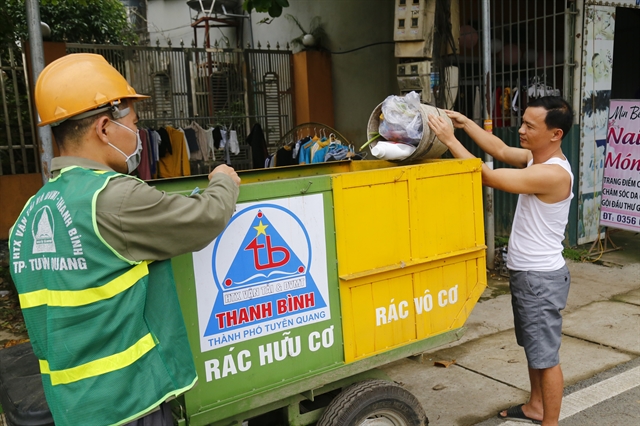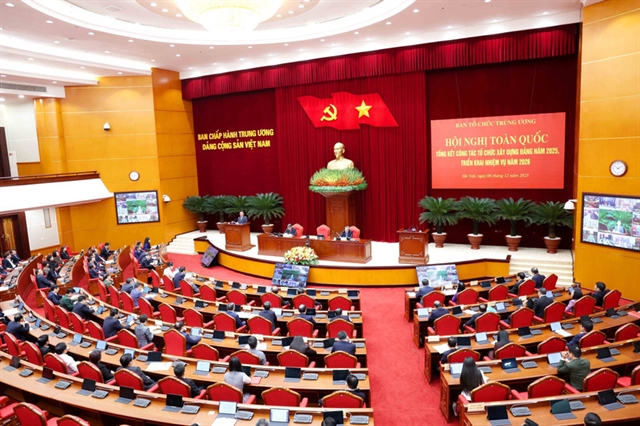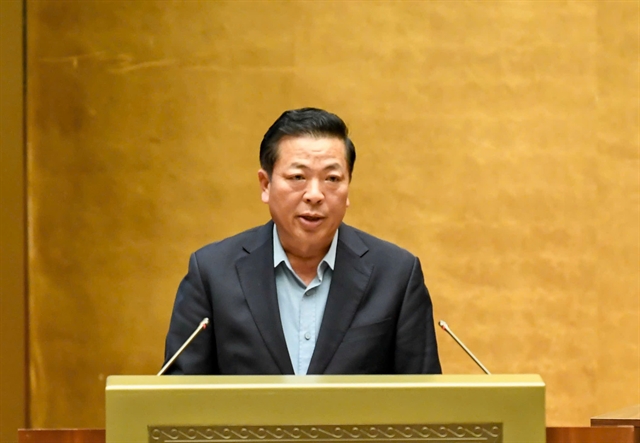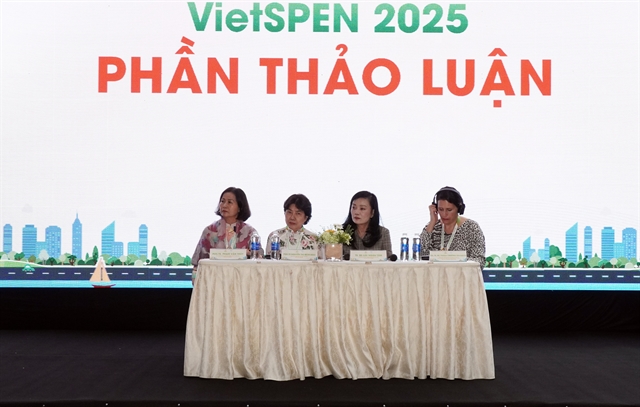 Environment
Environment


|
| A local resident in northern Tuyên Quang Province is guided to seperate waste. — VNA/VNS Photo |
HÀ NỘI — The 2020 Law on Environmental Protection, which took effect at the beginning of 2022, has introduced many new policies related to environmental protection.
The law is also gradually harmonised with international laws with amendments related to environmental quality management towards protecting people's health.
For the first time, the law defines a residential community as a subject of environmental protection, which promotes the role of residential communities in environmental protection activities.
It also comprises new regulations on strict control for projects with a high risk of adverse environmental impacts; post-inspection for projects using advanced and environmentally friendly technologies; and cuts many administrative procedures.
In particular, the new law also adds solutions to protect environmental components, promote waste separation at source, and manage and deal with waste.
Many localities nationwide have taken the initiative in implementing solutions to protect the environment, and mobilising the involvement of all-level authorities, people and businesses in the work.
In the southern province of Bình Dương, toward the goal of sustainable socio-economic development, local leaders have oriented industrial development in the direction of environmental protection.
Since the law was approved at the end of 2020, the provincial Department of Natural Resources and Environment has actively reviewed regulations to give related consultations to the provincial People's Committee.
Most industrial parks (IP) in Bình Dương have invested in building separate rainwater and wastewater drainage networks with a total investment of over VNĐ2 trillion.
Notably, a wastewater treatment plant with a daily capacity of 6000cu.m was built in the Singapore Industrial Park II (VSIP II) in the locality.
Bình Dương has prioritised attracting projects with modern and advanced technologies and restricts new projects outside IPs and industrial clusters.
It also planned to invest in an automatic air quality monitoring system and apply forecasting models, compile pollution maps for localities with high urbanisation rates; and set up a warning system on air quality on the portal of the provincial natural resources and environment sector.
The northern province of Phú Thọ has also actively inspected businesses and production units throughout the locality, in order to guide them in installing automatic environmental monitoring stations.
According to Nguyễn Vĩnh An, director of the environmental protection sub-department of Phú Thọ Province, the installation of an automatic environmental monitoring systems helps businesses prove that their emissions to the environment are at an allowable level. — VNS




